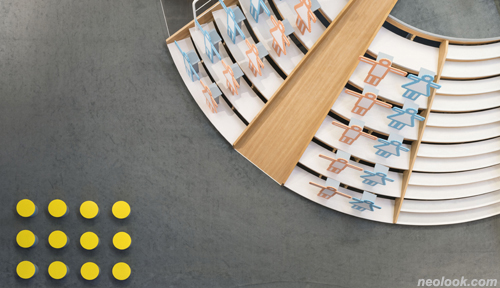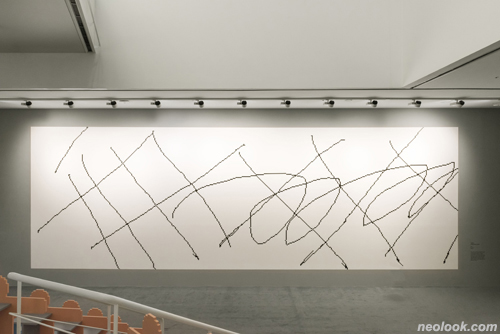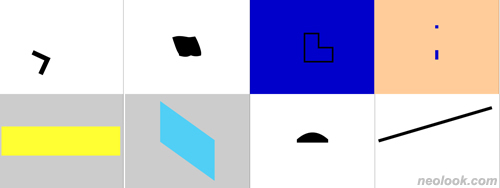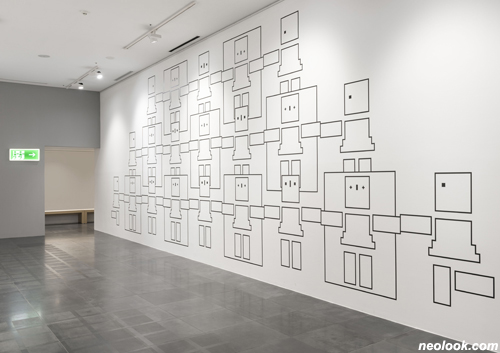- ● homepage
- ● archives
- ● restoration
- ● books
- ● big banners
- ● post board
- ■ neo's search
- ■ about us
- ■ 게재방법 안내
- 개인정보처리방침

- [email protected]
- Tel. 02_335_7922
- Fax. 02_335_7929
- 10:00am~04:30pm
- 월요일~금요일
- 3/3(월) 대체공휴일

점·선·면
Point·Line·Plane展 2016_1213 ▶ 2017_0416 / 1월1일,월요일 휴관

- 점·선·면 Point·Line·Plane展_서울시립 북서울미술관_2016
초대일시 / 2016_1220_화요일_05:00pm
참여작가 / 홍승혜
도슨트 / 12월21일부터 10:30am / 1일 1회
관람시간 / 10:00am~08:00pm / 1월1일,월요일 휴관 주말,공휴일_10:00am~06:00pm(12~2월), 10:00am~07:00pm(3~4월) 뮤지엄나이트(1,3번째 금요일),문화가 있는 날(마지막주 수요일)_10:00am~10:00pm
서울시립 북서울미술관 SeMA, Buk Seoul Museum of Art 서울 노원구 동일로 1238(중계동 508번지) 어린이갤러리 Tel. +82.(0)2.2124.5201 sema.seoul.go.kr sema.seoul.go.kr/bukseoul
서울시립 북서울미술관은 조형예술의 기본 요소인 점과 선, 그리고 면을 주제로 한 어린이 전시 『점·선·면』을 개최한다. 북서울미술관 어린이갤러리는 어린이와 가족단위 관람객이 현대미술을 보다 친숙하게 느끼고 다가갈 수 있도록 감상과 체험을 결합한 교육 전시를 운영하여왔다.

- 홍승혜_북극성 Polaris_월 스티커_가변크기_2016

- 홍승혜_우리 모두 We All_합판에 폴리우레탄, 스티커_각 100×66×30cm, 각 100×97×30cm_2016

- 홍승혜_이중정글, 서치라이트, DEC 13, 2016 – APR 16, 2017_2016
형상의 출발이 되는 점, 방향을 가진 선, 넓이와 공간을 만들어내는 면은 우리들이 주변의 사물과 공간을 지각하고, 느낌이나 생각을 조형언어로 표현하는 데 필요한 미술의 기본 요소이다. 따라서 점·선·면에 대한 이해는 어린이의 미적 경험과 미술 교육에서 매우 중요한 의미를 가진다. 이러한 인식을 바탕으로 기획된 『점·선·면』에서는, 오랜 시간 디지털 이미지의 최소단위인 픽셀(pixel)의 구축을 통해 공간에 대한 내용적, 형식적 실험을 지속해온 홍승혜 작가를 초대하였다. 점·선·면으로 구성되는 차가운 기하학적 형태에 불규칙함이나 우연성 등 자연의 속성을 부여하는 홍승혜 작가의 「유기적 기하학」 연작은, 컴퓨터 화면 속 추상적 이미지에서 출발하여 가구와 같은 실제 오브제, 영상, 음악 등의 형식으로 확장되어 왔다. 본 전시는 이러한 작가 고유의 작업세계를 토대로 어린이들에게 점·선·면에 대한 새로운 감상 경험을 제공하고자 한다.

- 홍승혜_그림악보 Pictorial Music Score_월스티커_가변크기_2016

- 홍승혜_퍼즐 테이블 Puzzle Table_ 합판에 폴리우레탄, 폴리카보네이트, LED, 스틸, 고무공_100×100×60cm_2016

- 홍승혜_사각원 Square Round_월 스티커, 페인팅_가변크기_2016
전시는 점·선·면의 다양한 특성이 반영된 신작들로 구성되며, 크게 두 부분으로 나누어 살펴볼 수 있다. 먼저 점이 선과 면으로 확장되는 과정을 보여주는 교육적 차원의 벽화와 영상작품들이 있다. 전시장 벽면 곳곳에 도색된 사각 프레임은 기존 건축물에서 구분되는 독립적인 면으로 보이면서 공간을 새롭게 구획한다. 또한 별자리, 원과 사각형 등을 표현한 월 스티커 작업과 작가가 만든 사운드를 따라 기하학적 도형이 춤을 추듯 움직이는 플래시 애니메이션은 점·선·면의 생성과 변주를 보여준다.

- 홍승혜_어린이의 노래 Children's Song_플래시 애니메이션_00:03:58, 가변크기_2015

- 홍승혜_스툴 Stool_합판에 폴리우레탄, 플라스틱 파이프_30×40×40cm×16_2016
다른 한편으로 기하학적 도형을 바탕으로 일상의 사물을 구현한 설치 작품들이 있다. 정글짐, 스툴, 테이블, 장난감 자동차 등 누구나 쉽게 파악할 수 있는 구체적인 사물들은 익숙함과 추상성을 동시에 전달하며 관람자의 신체적 개입을 적극 유도한다. 이처럼 기하학적으로 환원된, 그러나 삶의 영역에 밀접히 닿아있는 사물들을 실제로 만져보고 옮겨보는 과정에서 그동안 익숙하거나 당연하게만 느껴왔던 형태나 공간에 대해서도 다시금 생각해 볼 수 있을 것이다.

- 홍승혜_장난감 자동차 Pushmobile_합판에 폴리우레탄, 스틸, 스티커, 바퀴_90×95×60cm_2016
이번 전시는 어린이들이 작품을 단순히 시각적으로 감상하는 것을 넘어 함께 어울리고 소통하며 점·선·면의 개념을 친숙하게 체득할 수 있도록 기획하였다. 이를 통해 점과 선, 그리고 면의 무한한 확장 가능성을 경험하고 삶 속에서 발견하게 되는 사물과 공간을 새롭게 바라볼 수 있기를 기대한다. ■ 서울시립 북서울미술관

- 홍승혜_소년세계 Boys' Kingdom_월 스티커_가변크기_2016

- 홍승혜_소녀세계 Girls' Kingdom_월 스티커_가변크기_2016

- 홍승혜_비상구 표지등 Emergency Exit Lamp_폴리카보네이트에 스티커, EGI 스틸, LED_30×70×8cm_2016
SeMA, Buk-Seoul Museum of Art presents Point·Line·Plane, an exhibition for children on the subject of the basic elements of the plastic arts: the point, the line, and the plane. Buk-Seoul Museum of Art's Children's Gallery organizes exhibitions that combine viewing and experiences in order to familiarize children and families to contemporary art, making it more accessible. ● The point (which is the beginning of a shape), a line (which has a direction), and a plane (which creates area and space) are the basic elements of art. These elements are needed in order for humans to perceive objects and spaces around them and to express feelings and thoughts in a formal language. Understanding the point, line, and plane is an important step in the pedagogy of children and their aesthetic experience. Based on this understanding Point·Line·Plane invites the artist Hong Seung-Hye, who has long carried out experiments —both in content and form— with spaces constructed by the pixel — the smallest unit of the digital image. Hong's Organic Geometry series, which imbues natural qualities such as irregularity and contingency to the cold geometric elements of point, line, and plane, began as abstract images on computer screens and has expanded to different forms such as real objects (like furniture), videos, and music. Based on the artist's own practice, this exhibition aims to provide children a new experience of point, line, and plane. ● Consisting of new works that reflect various qualities of point, line, and plane, the exhibition is divided into two categories. First, there is a pedagogical mural and videos that show the process in which points expand to lines and planes. Partitioning the space anew, painted square frames that are placed in different areas in the exhibition space look like independent planes separated from the existing architecture. Additionally, the creation and variation of point, line, and plane are demonstrated through a work of wall stickers that depict constellations, circles, and squares. Also, a flash animation that shows moving geometric figures that looks like dancing through sound created by the artist. ● In another vein, there are installations that construct daily objects from geometric figures. Objects that are easily recognizable by anyone such as a jungle gym, stools, tables, and pushmobiles encourage the audience's bodily engagement while imparting familiarity and abstraction. In the process of touching and moving objects that are reduced to geometric shapes yet still closely related to our lives, viewers might be able to think again about familiar and seemingly natural forms and spaces. ● This exhibition is organized to help children easily learn the concept of point, line, and plane. Moreover, beyond a simple visual appreciation of artworks it allows the audience to play and communicate with each other. Through this process we expect the audience to experience the infinite possibilities of point, line, and plane, and see anew the objects and spaces found in the everyday environment. ■ SeMA, Buk-Seoul Museum of Art
Vol.20161213i | 점·선·면 Point·Line·Plane展
